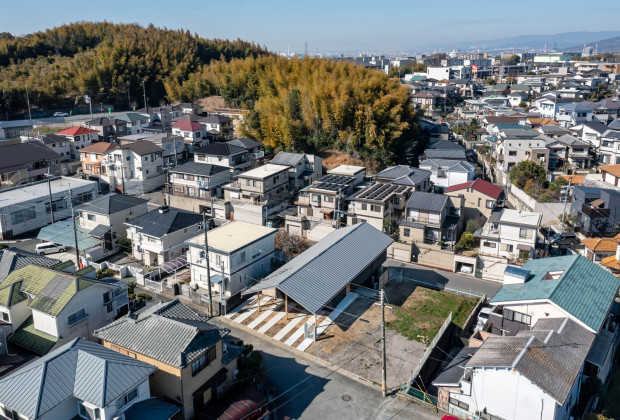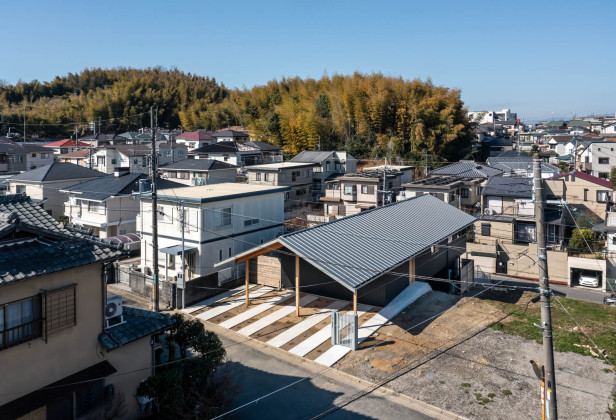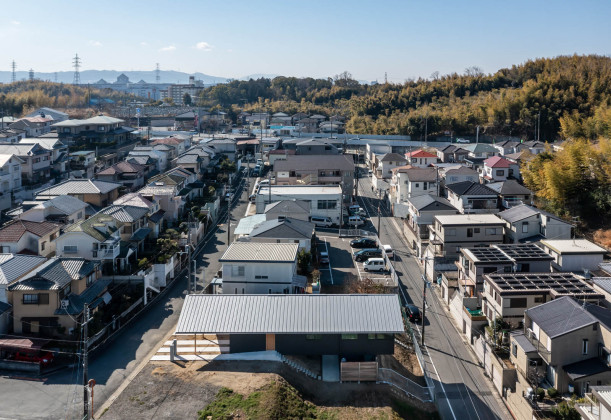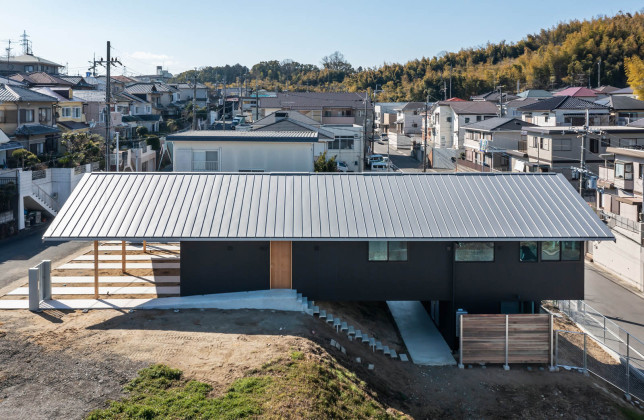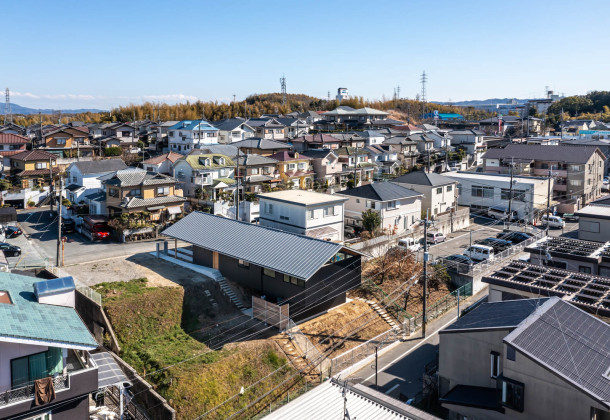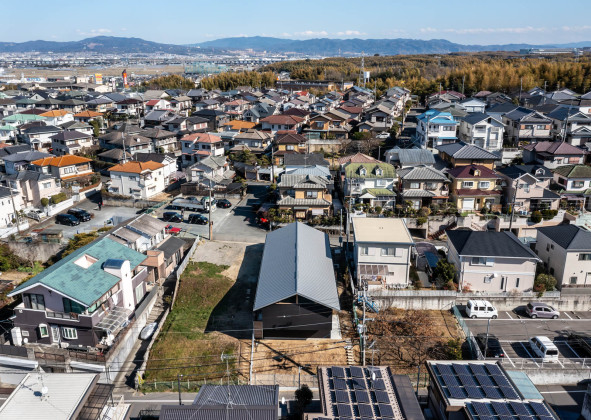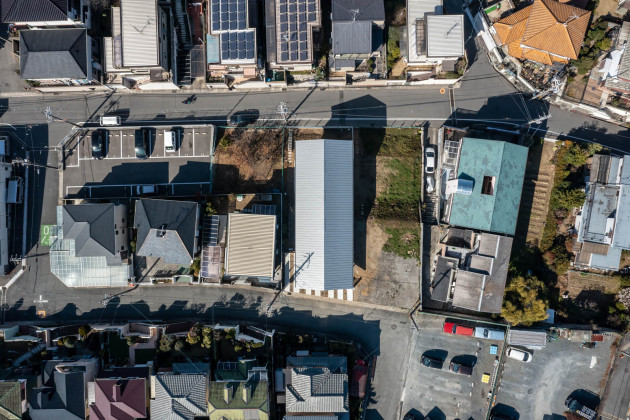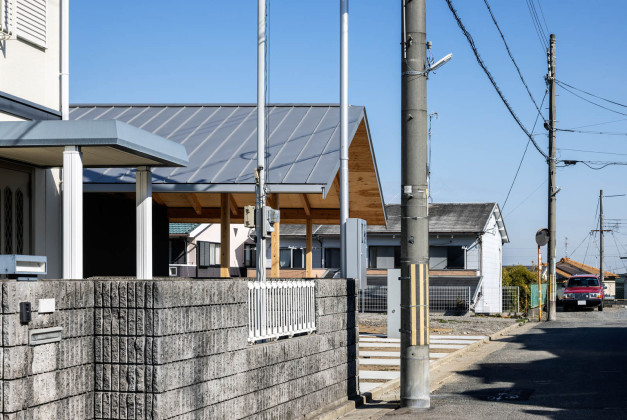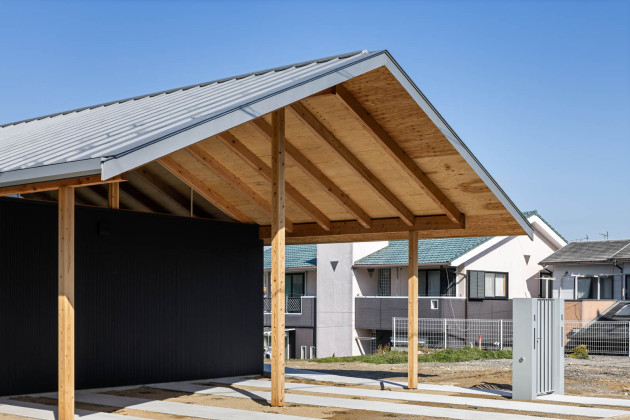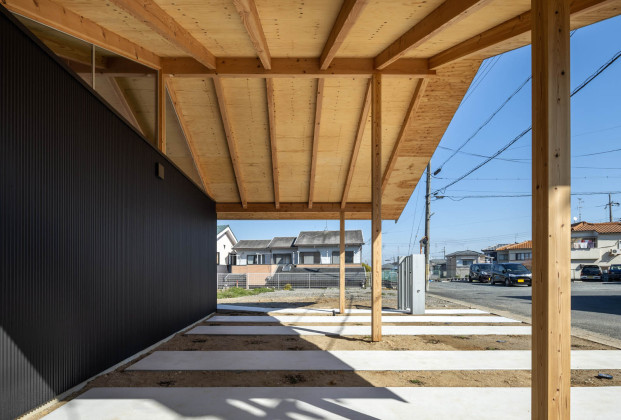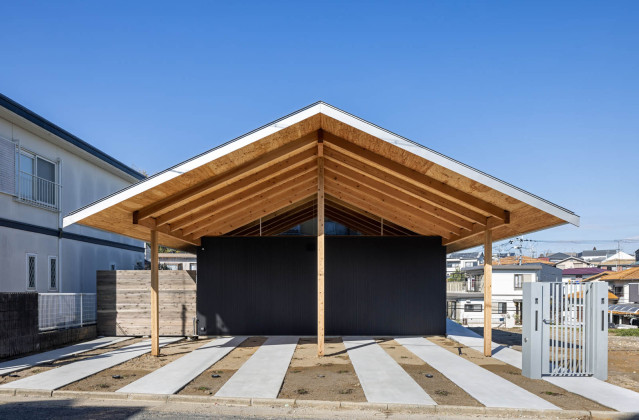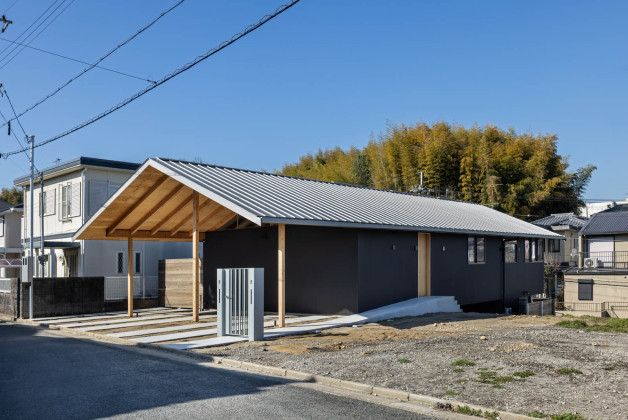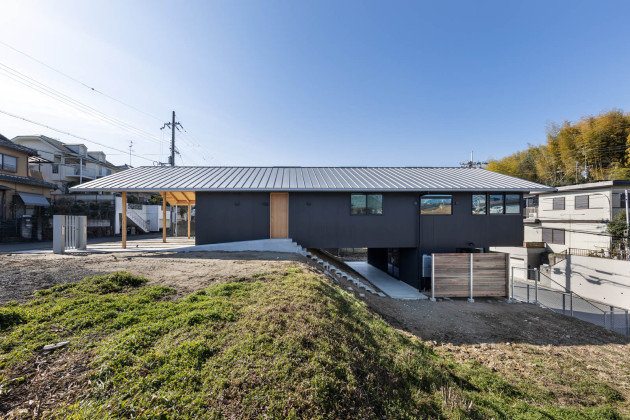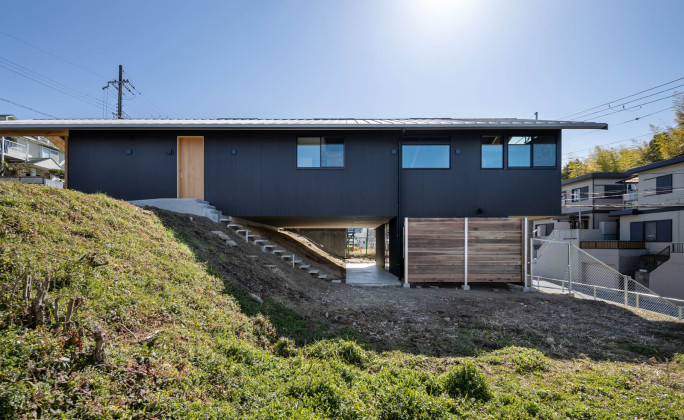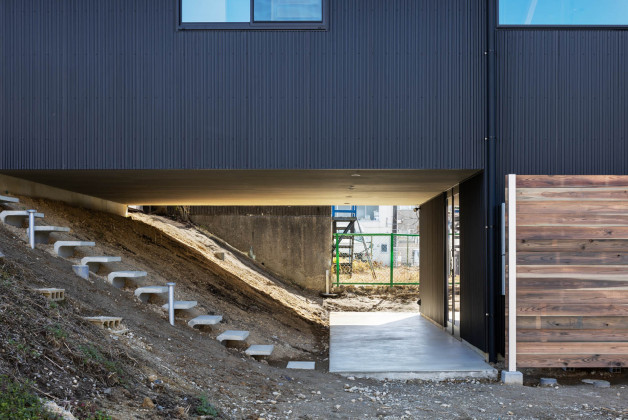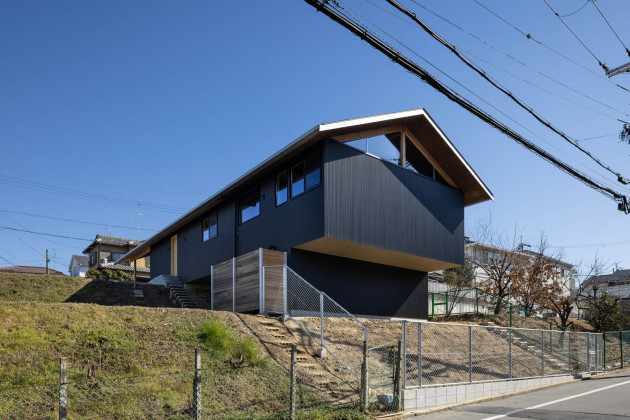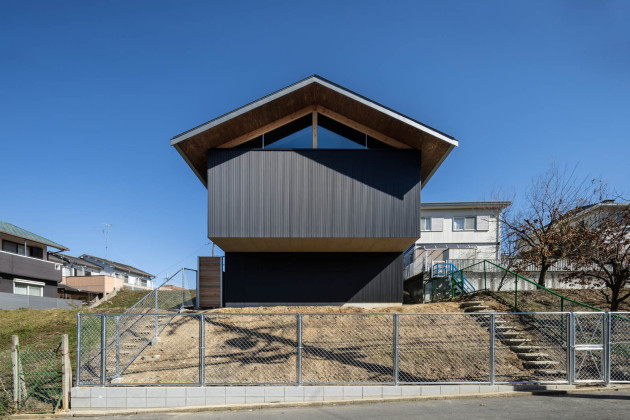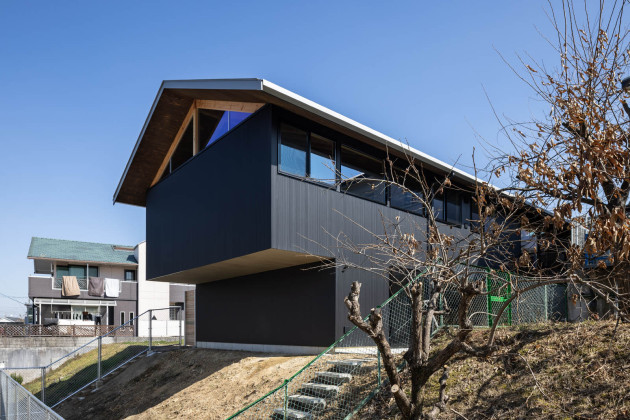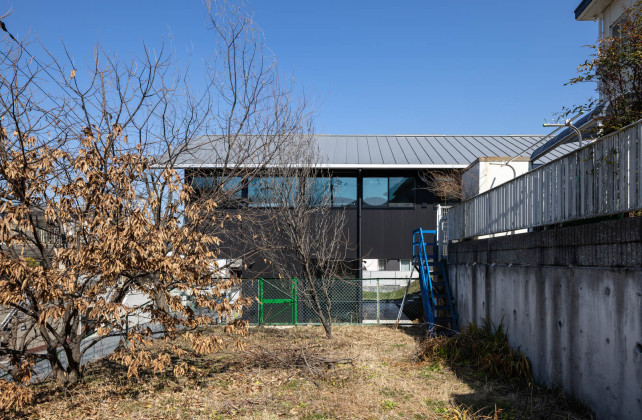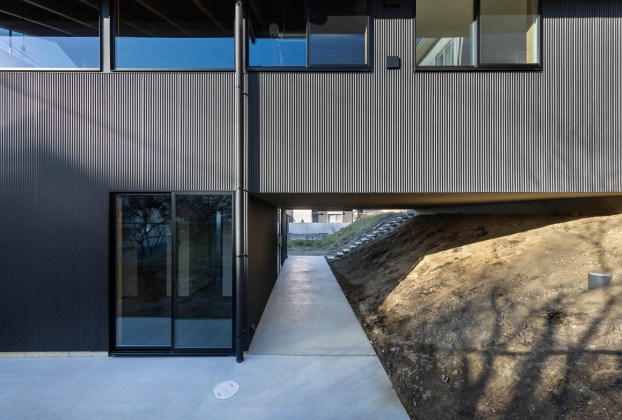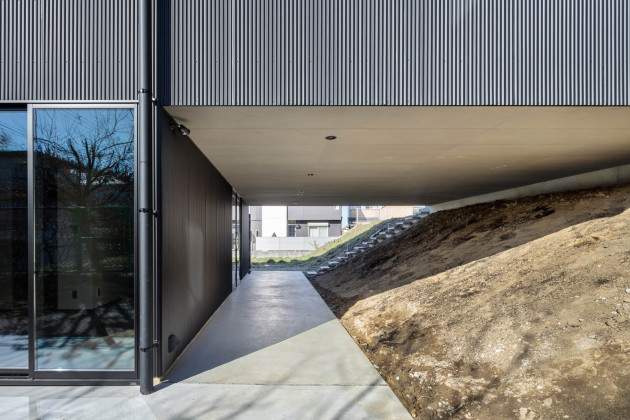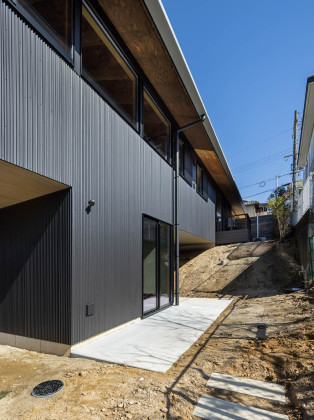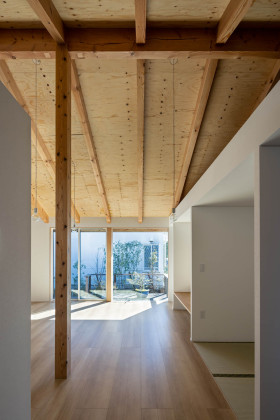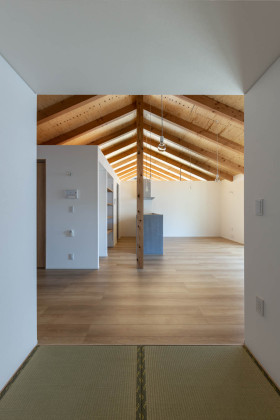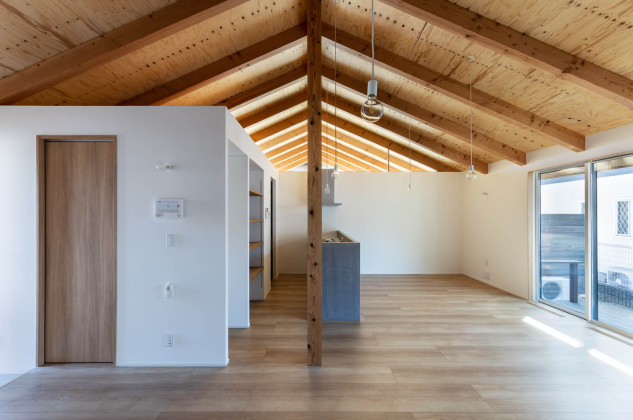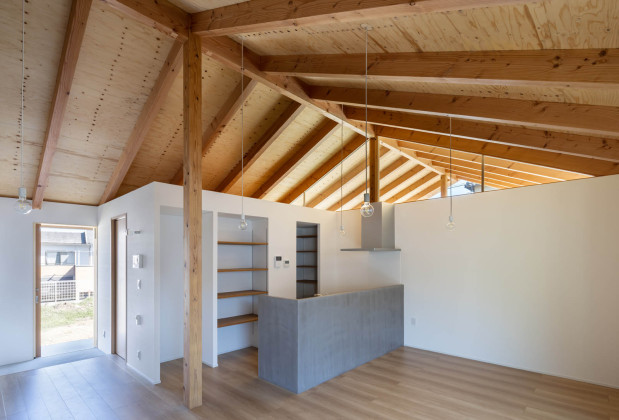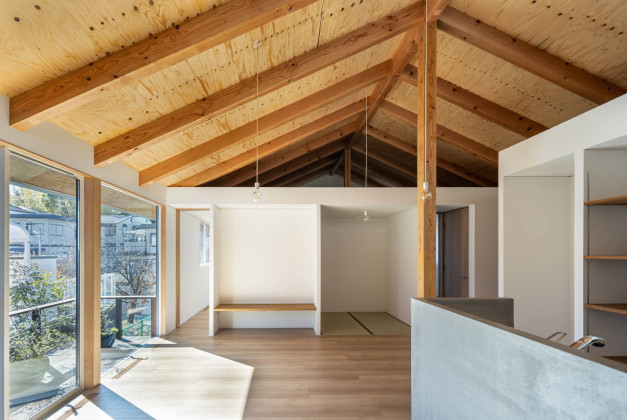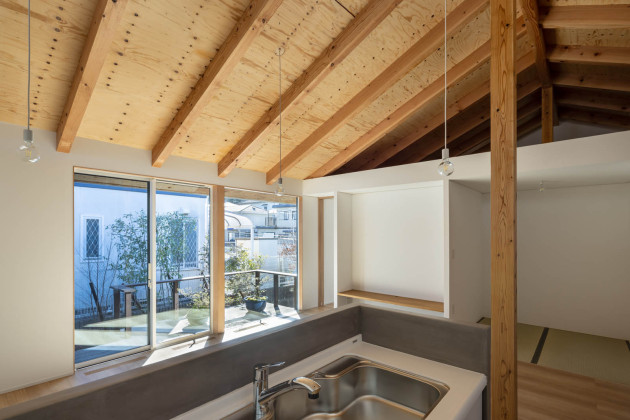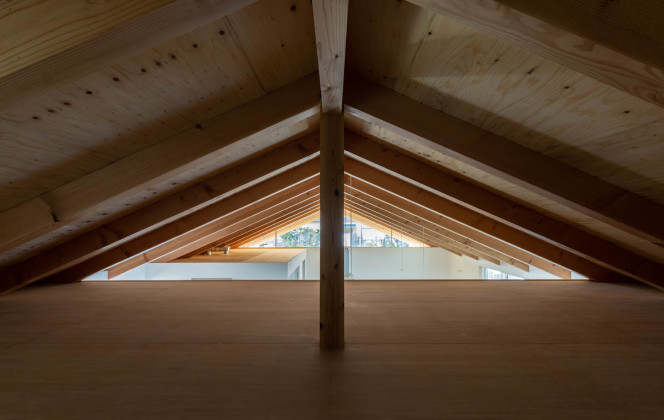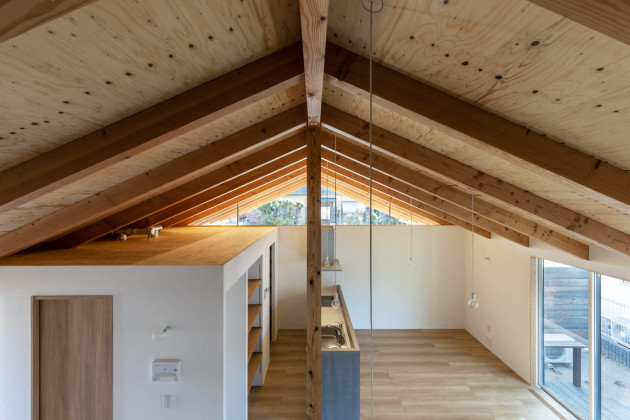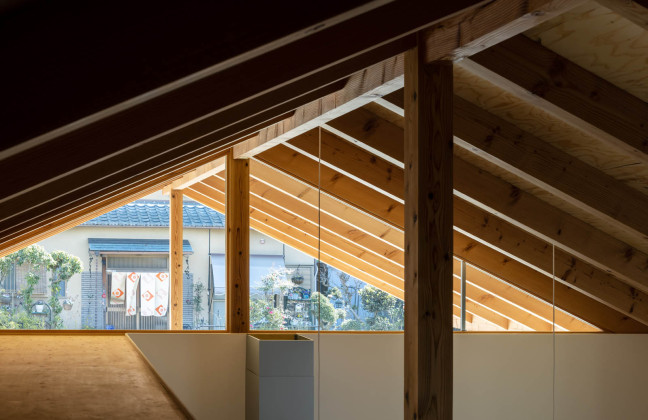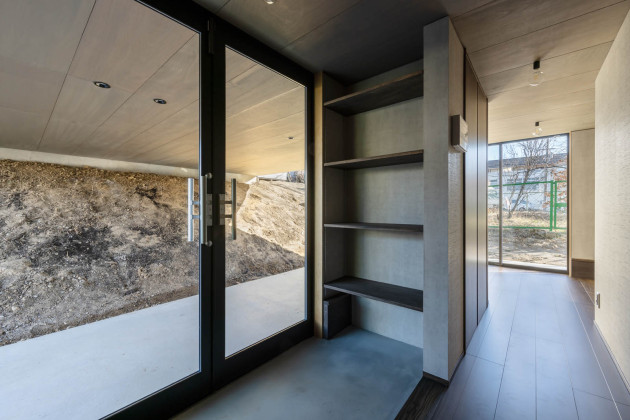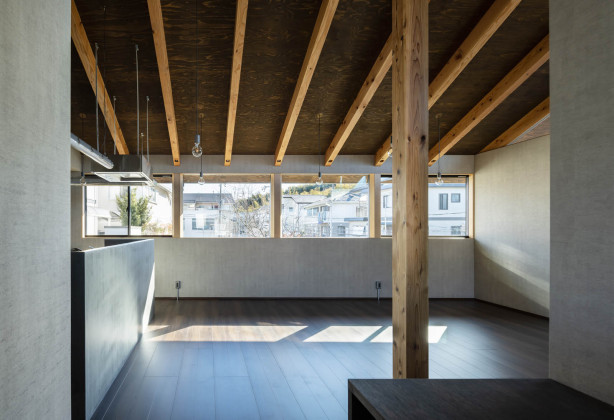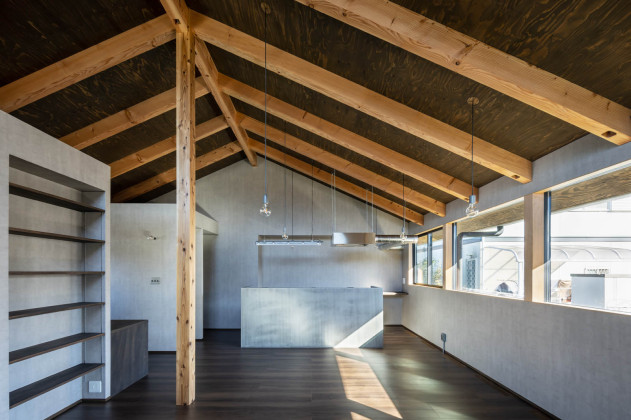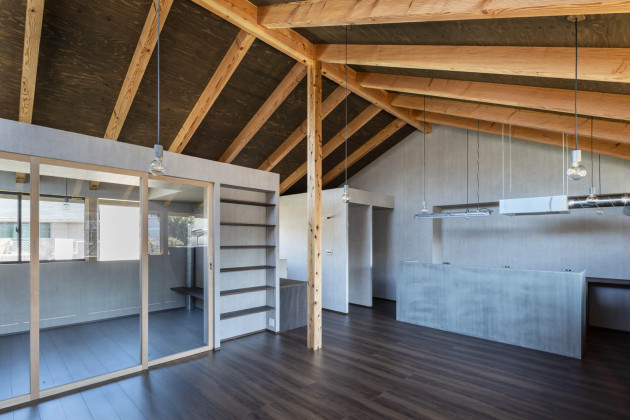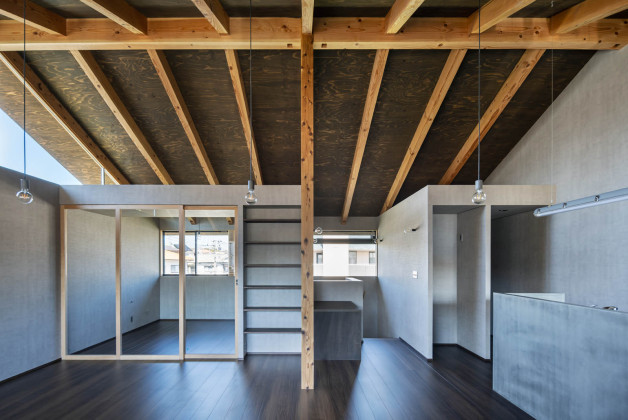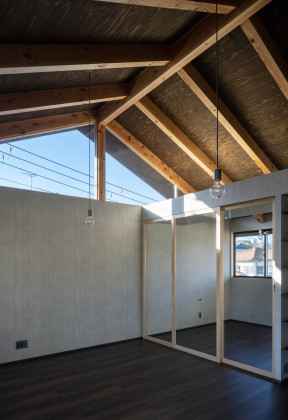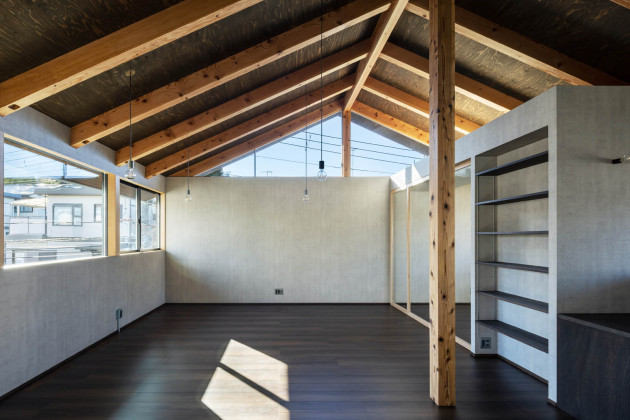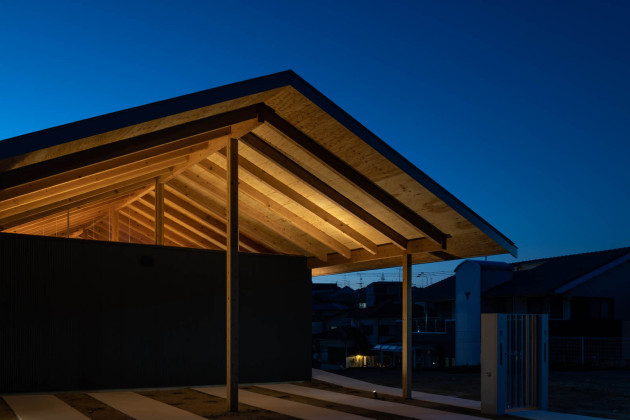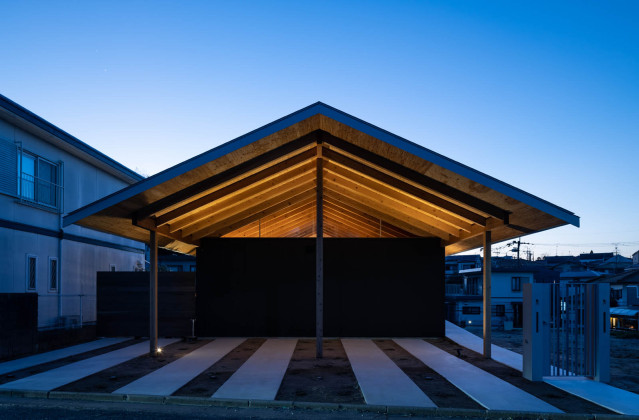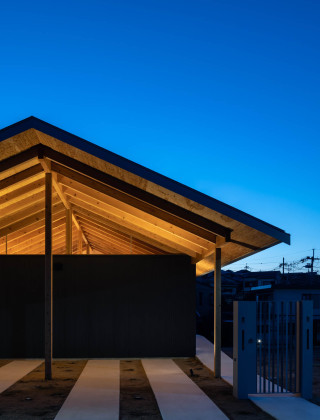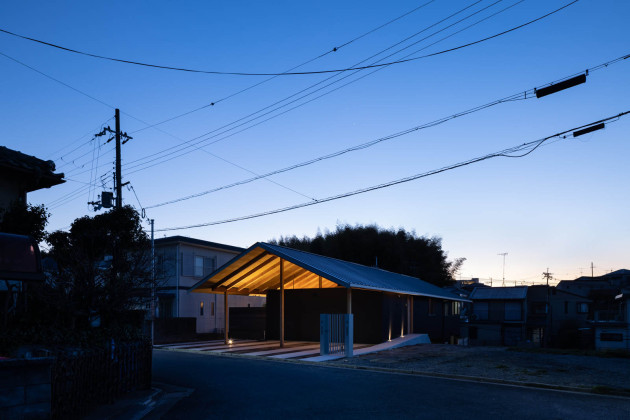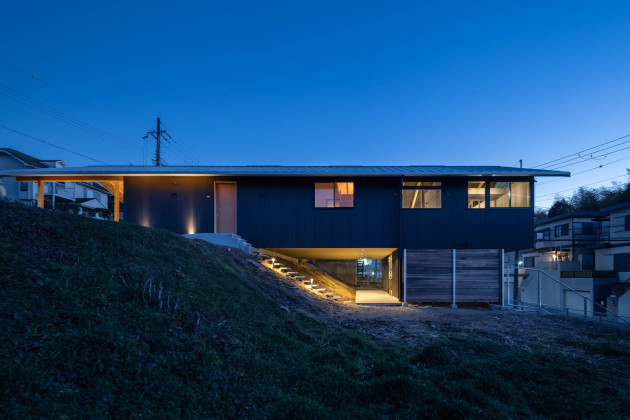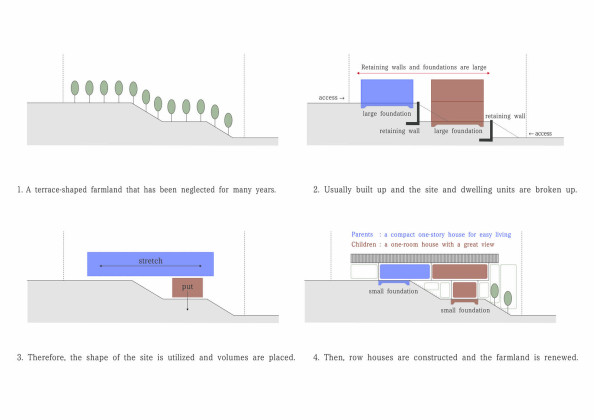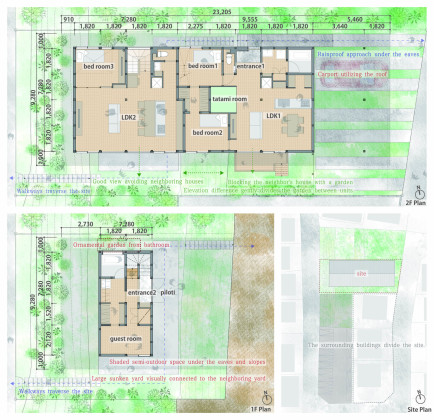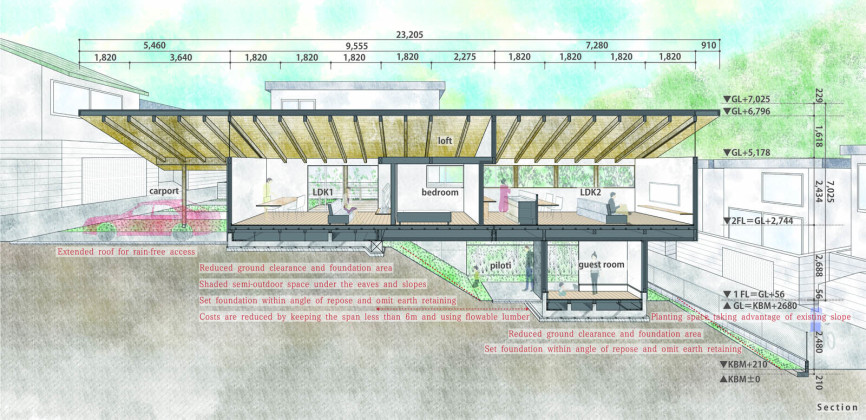Two-Family House in Yawata
The house designed by Hirokazu Taniguchi Atelier, is located in Yawata, Kyoto, Japan. The office describes the project as follows:
This two-family house for elderly parents and their son is located on a terrace-shaped land in the southern part of Kyoto Prefecture. The owner was considering a two-family house to look after his parents. They were looking for a site where they could live without having to make major changes to their existing lifestyle, such as keeping up with their neighbors and the burden of moving when they found a piece of farmland for sale just a three-minute walk from their parent’s house.
The planned site is an irregularly shaped land in the shape of a terrace with an elevation difference. It used to be used as farmland, but it had been neglected for many years and had fallen into disrepair. The reason for this was that a retaining wall would have to be built if the land was to be converted into residential land, which would have cost an enormous amount of money, enough to build a single house, but would have divided the site and made it difficult to utilize the entire site. The surrounding houses also faced the same problem. As is customary, a retaining wall was built, a house was constructed on half of the site, and the rest was used as a parking lot or garden as if it had always been a separate site, and the potential of the land was not fully utilized. The rich site, with its unique differences in elevation, was mechanically developed to build a house, and rewritten as something small, flat, and ubiquitous, thus dividing the various aspects of the site.
Therefore, in this project, we sought a way to build the house so that the site with the elevation difference and the house become one. Precisely, by placing a small volume on low ground and a long volume on high ground, the house will land on the site while securing the necessary area without any site development. The ground clearance between the site and the house is minimized to reduce costs by reducing the number of foundations while at the same time allowing for gaps that allow people and gardens to enter. This would create an undulating, connected garden that does not divide the entire site, and by wrapping three-dimensionally around the house, it would provide an opportunity to connect matters of various scales, such as exterior and interior, site and community, household and household, and so on. We aimed to create a situation in which the site is reborn through the construction of the house, rather than being separated from the site by the construction of the house, and to create a better relationship with the house.
On the other hand, the main requirements of the client were: “Parents: a compact one-story house for easy living, a loft for storing the family’s belongings, and a space for growing bonsai trees,” and “Children: a one-room house with a great view, a spare room for inviting guests, and a garden for BBQ,” and the common request was for a separated form without traffic. The volumes mentioned above were arranged in the following way: on the higher ground, a one-story house for the parents was desirable for its accessibility; on the lower ground, a two-story house for the children was desirable because there were no buildings around, and they could enjoy the view; and by connecting them with a long roof, a row house was constructed with one and two stories in a row.
The plan is arranged in such a way that the living requirements and the garden, including the LDK, the bonsai viewing area, the spare room, and the BBQ, are related to each other, and the shade and the sunshine from the volume and the high and low points of the site are combined to allow the owners to create various living spaces within a single connection.
The structure is made of wood, with a gable roof to accommodate a loft, a timber length of 6m or less to use tradable timbers and an eave that doubles as a carport.
During the pre-delivery inspection with the client, he told us he wanted to build a wooden deck on the slope. We were surprised that this was a bit premature, as they had yet to move in, but after visiting the completed tenement house and garden, they had a further image of what they wanted to do. This is because there is a generous gap between the tenement and the garden that accepts the desired lifestyle. Just as the tenement house has renewed the farmland that had fallen into disrepair into a garden, this garden, through its mutual relationship with the tenement house, will enrich and renew the way of life in the area.
 23.02.2024
23.02.2024



